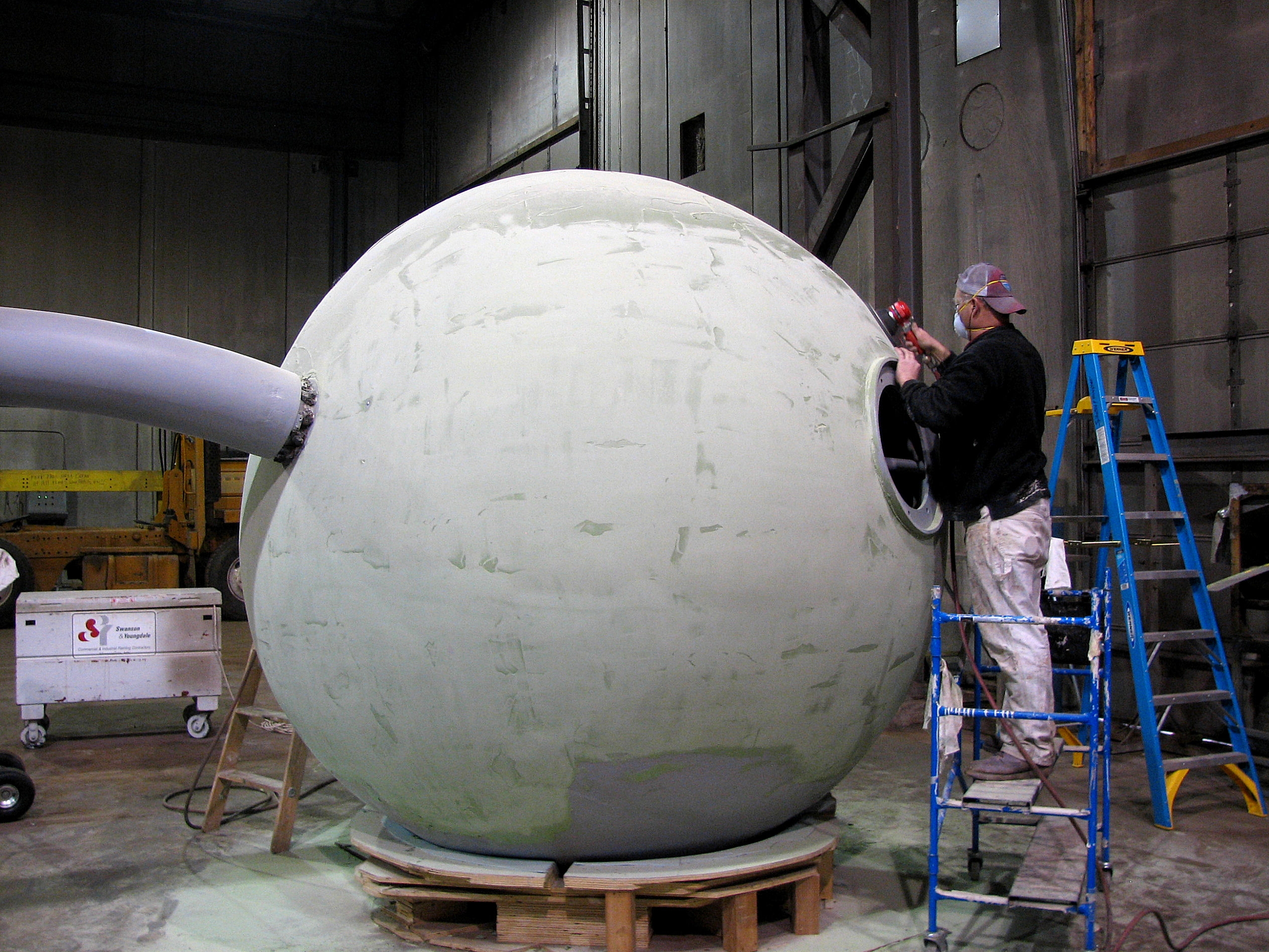Since the mid 1980s, the “Spoonbridge and Cherry” sculpture in the Minneapolis Sculpture Garden near the Walker Art Center (Figure 1) has been a symbol of the Twin Cities (Minneapolis and St. Paul). In February 2009, after more than 20 years of being perched atop a giant spoon, the 1,200-lb (544-kg) metal cherry was removed and taken to a local paint facility for a facelift.
Walker Art Center representatives in charge of the sculpture by Claes Oldenburg and Coosje van Bruggen had noticed some surface irregularities on the cherry and were concerned about the condition of its coatings. The author performed a failure analysis by closely inspecting the cherry from a lift while it was still attached to the spoon. While the cherry had been repainted three times throughout the years, it was noted that the paint was fading, exhibiting slight discolorations, and showing some microscopic surface cracking. These conditions were most likely brought on by more than 20 years of extreme conditions, such as temperature variations, ultraviolet (UV) rays from the sun, and exposure to water as the sculpture is part of a water feature. Because of that perfect storm for paint problems, and after being displayed for more than two decades, it was really a choice between refinishing the entire cherry or repairing different areas of the sculpture year after year.
After examining several options, Walker Art Center representatives decided to refinish the sculpture’s cherry. In February, they removed the cherry from the sculpture and sent it by flatbed truck to Industrial Painting Specialists (IPS), a local coatings facility in Hugo, Minnesota. Specifications that determined how the cherry should be coated were developed after taking several issues into consideration. Rob Roy, a NACE International instructor, was able to provide background information about the sculpture. Roy had consulted on the sculpture as it was being built in Connecticut. Networking through NACE helps professionals maintain the standards that are taught to them when they get their certification.
The sculpture is subjected to an array of harsh Minnesota conditions, such as temperatures that can range from more than 100 °F (38 °C) in the summer to –30 °F (–34 °C) in the winter. When the temperature changes, the sculpture’s aluminum base metal undergoes thermal expansion and contraction. This can cause problems with coating adhesion at a microscopic level. The sculpture is also wet much of the time. It contains a watering system that keeps the cherry looking shiny, but also creates harsher conditions for the coating. For this reason, marine-grade immersion materials, which are often used to recoat yachts, were chosen for the project. Because the sculpture is displayed outdoors, it is subject to high UV conditions, which can cause fading and aging for highly pigmented colors. Additionally, because the project is literally a piece of art, it had to look good.
The first step in the cherry’s refinishing was to remove all of the old coating by hand abrasive blast cleaning. This yielded a surprising insight into the sculpture, as it was discovered that the cherry was constructed of aluminum and not stainless steel as first thought. The Braun Intertec nondestructive examination (NDE) group used a testing method called positive material identification (PMI) to confirm the material. To protect the aluminum, a first coat of Sherwin- Williams SEAGUARD MP Multi- Purpose Epoxy Primer† was applied, followed by a coat of epoxy to protect the primer. Each layer of coating material helps to protect the underlying layers.
Once the first epoxy coats were applied, the process of reshaping the sculpture began. Several coats of a fairing compound were used to recreate the original “cherry” shape (Figure 2). This portion of the project turned out to be one of the most challenging, requiring the use of personnel with experience similar to that encountered in high-end automotive body work.
Numerous layers of the fairing compound were applied in light coats before being sanded. This process was repeated several times until the final shape was accepted by Joe King, associate registrar of the Walker Art Center who served as the project manager of the cherry’s refinishing. After the final shape was accepted, the coating process began again. Another coat of epoxy was applied over the fairing compound and the entire surface of the sculpture.
In late April, the cherry was finally ready to be painted with a deep gloss linear polyurethane red topcoat that was commissioned especially for the project and aptly named “Cherry Red.” Two coats of red polyurethane were applied and the cherry was lightly sanded to remove any remaining surface imperfections or sanding lines. After the final red topcoat application, final inspection, and acceptance by King, two coats of untinted clear linear polyurethane were were applied to discourage fading and aging from exposure to UV rays (Figure 3). The clear coat acts like a pair of sunglasses for the cherry. It helps the red color last longer. an important aspect of such an iconic piece.
TIM R. WILLIAMS is a coatings specialist at Braun Intertec, 11001 Hampshire Avenue S., Minneapolis, MN 55438, e-mail: twilliams@braunintertec.com. A NACE-certified Level 3 Coating Inspector, Williams has more than 20 years of experience in coatings and quality systems and assurance. His coatings work includes transportation, industrial, architectural, and cultural projects, as well as the Mall of America. He is a member of NACE International, the Canadian Welding Bureau, and SSPC.
†Trade name.